
Building for the creator economy before it was cool
Ahalogy
At Ahalogy we created products for Fortune 500 brands and top social creators to win together on Pinterest. Later we grew into helping those brands identify the right trends, timing, and creators for custom content campaigns. Ahalogy was acquired by Quotient.
Aperture
A web app for serious pinning
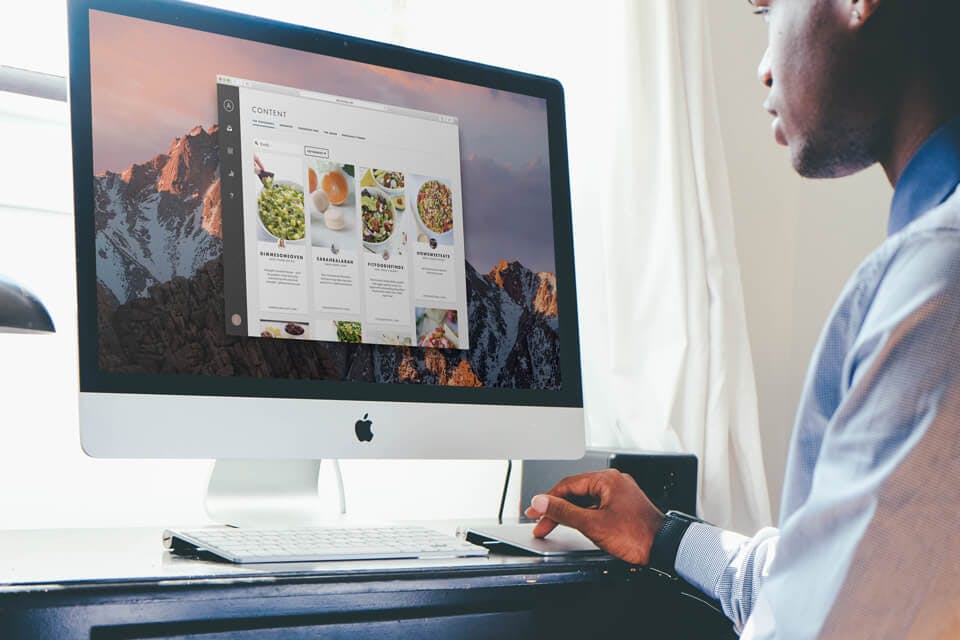
The web app was designed to be everything for content marketing on Pinterest, all in one place.
Most tools just scheduled to post later. They only care about efficiency.
Ahalogy was also in the business of improving a brand’s results. The product needed to address the efficacy of the content and its resonance with the brand’s audience as well.
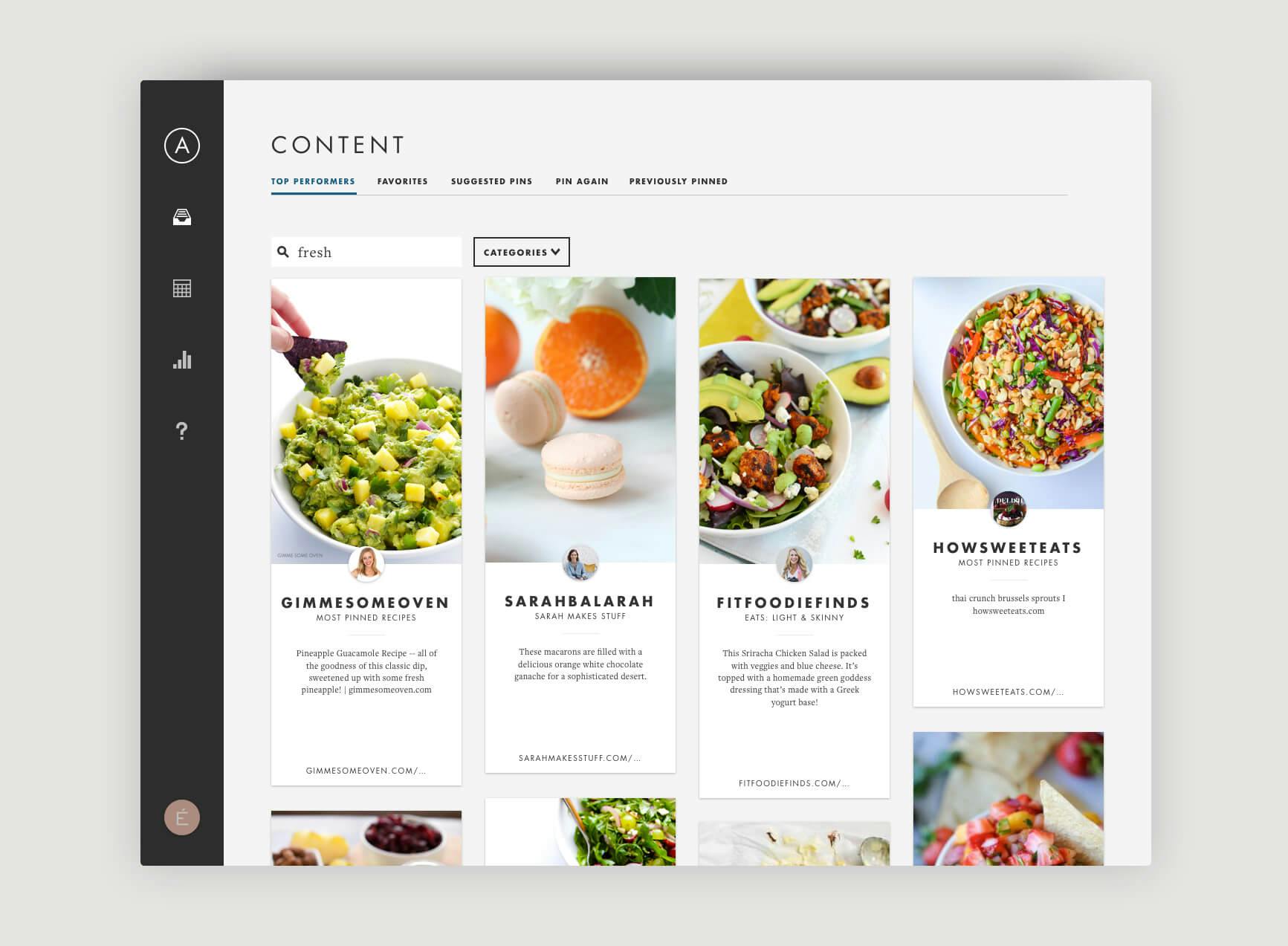
The app showed pins from the creators who were members of our exclusive content network. We made it simple for brands—whether on their own or via our client service team—to share great content
At the time, the correct Pinterest strategy for an account’s follower growth involved far more pins per day than brands had first-party content.
The solution? Curating and pinning useful content from other high-quality creators.
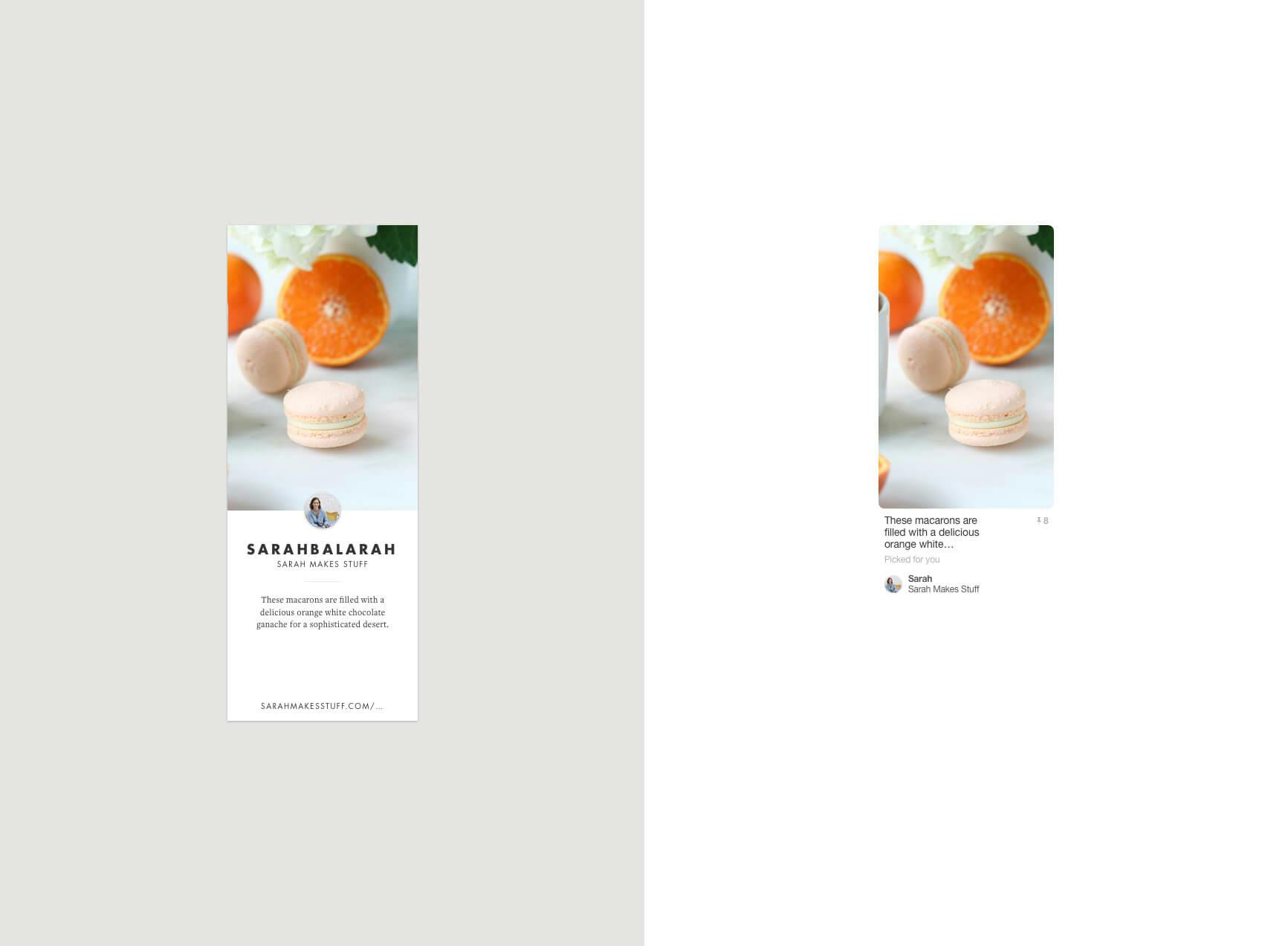
We even needed to redesign the display of Pins themselves, reorienting them from the jobs of the end users and towards those of publishers and brands. That meant things like seeing the full description, being able to scan a grid of Pins for specific partners, and easily linking to both Pinterest and the source.
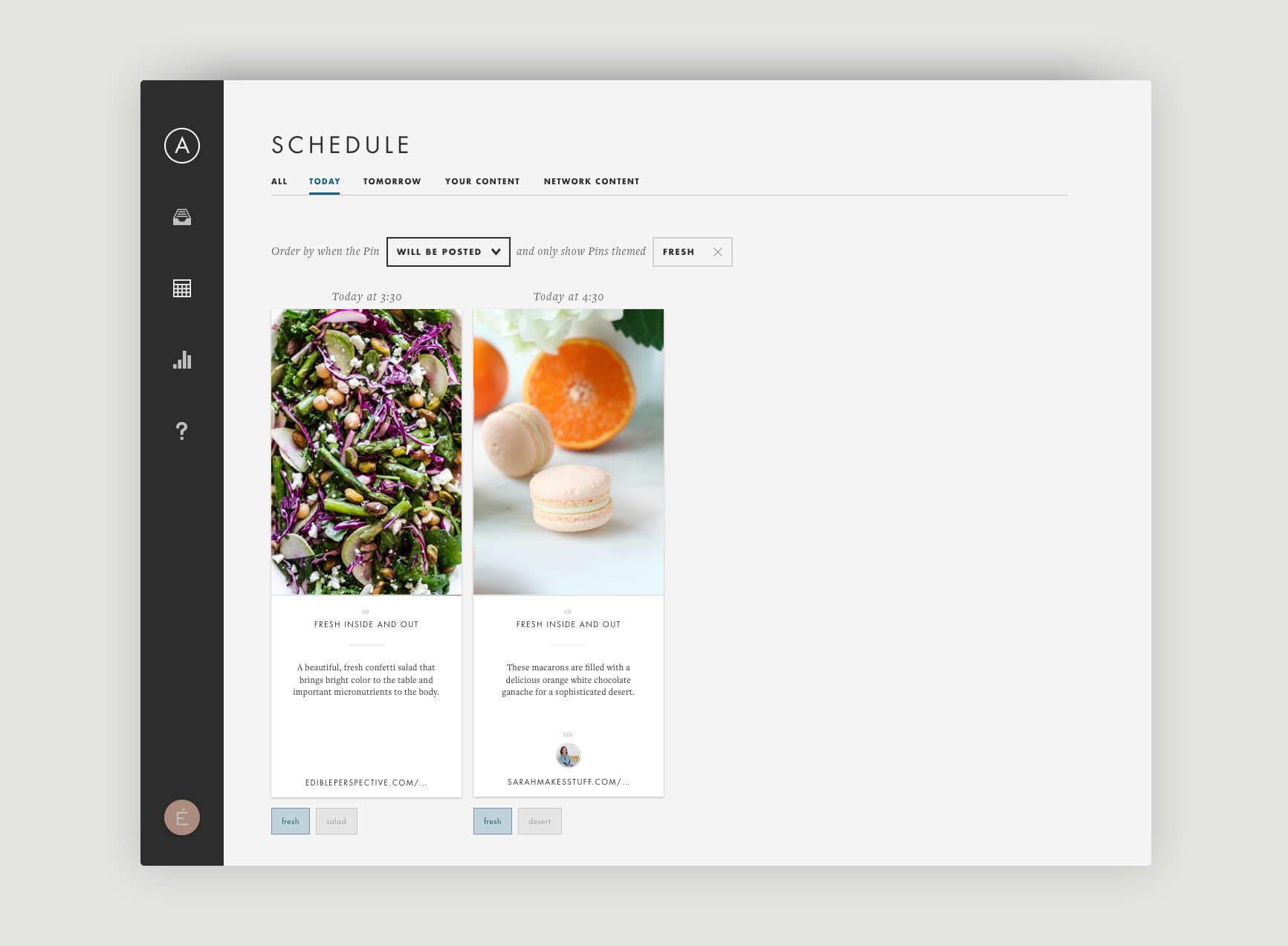
Beyond features like Pin creation and scheduled posting, we also built stuff like a scheduling algorithm to choose exactly which times to post content, and Liftwords, a predictive AI feature that recommends how to modify the copywriting of a Pin to increase audience engagement.
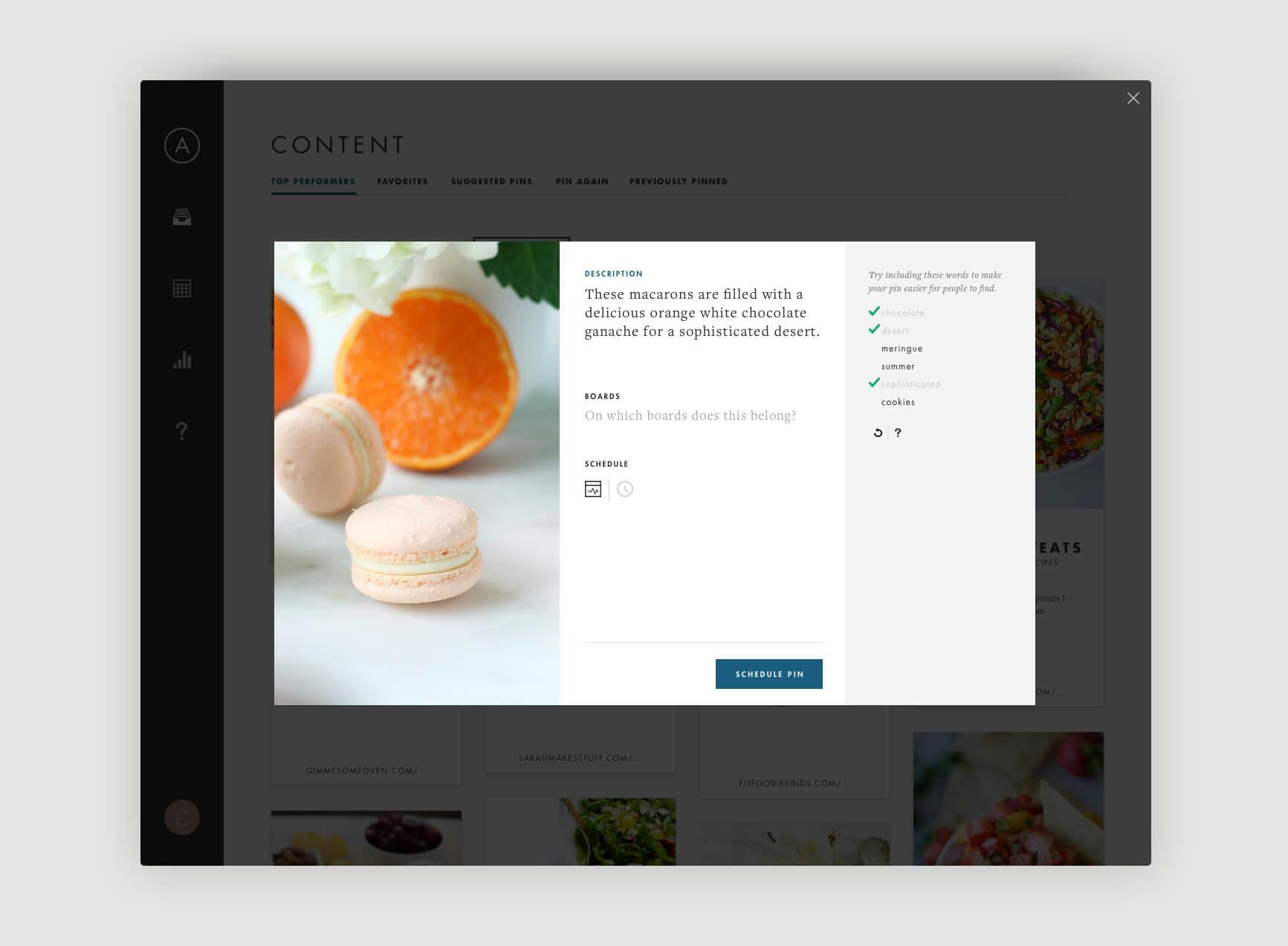
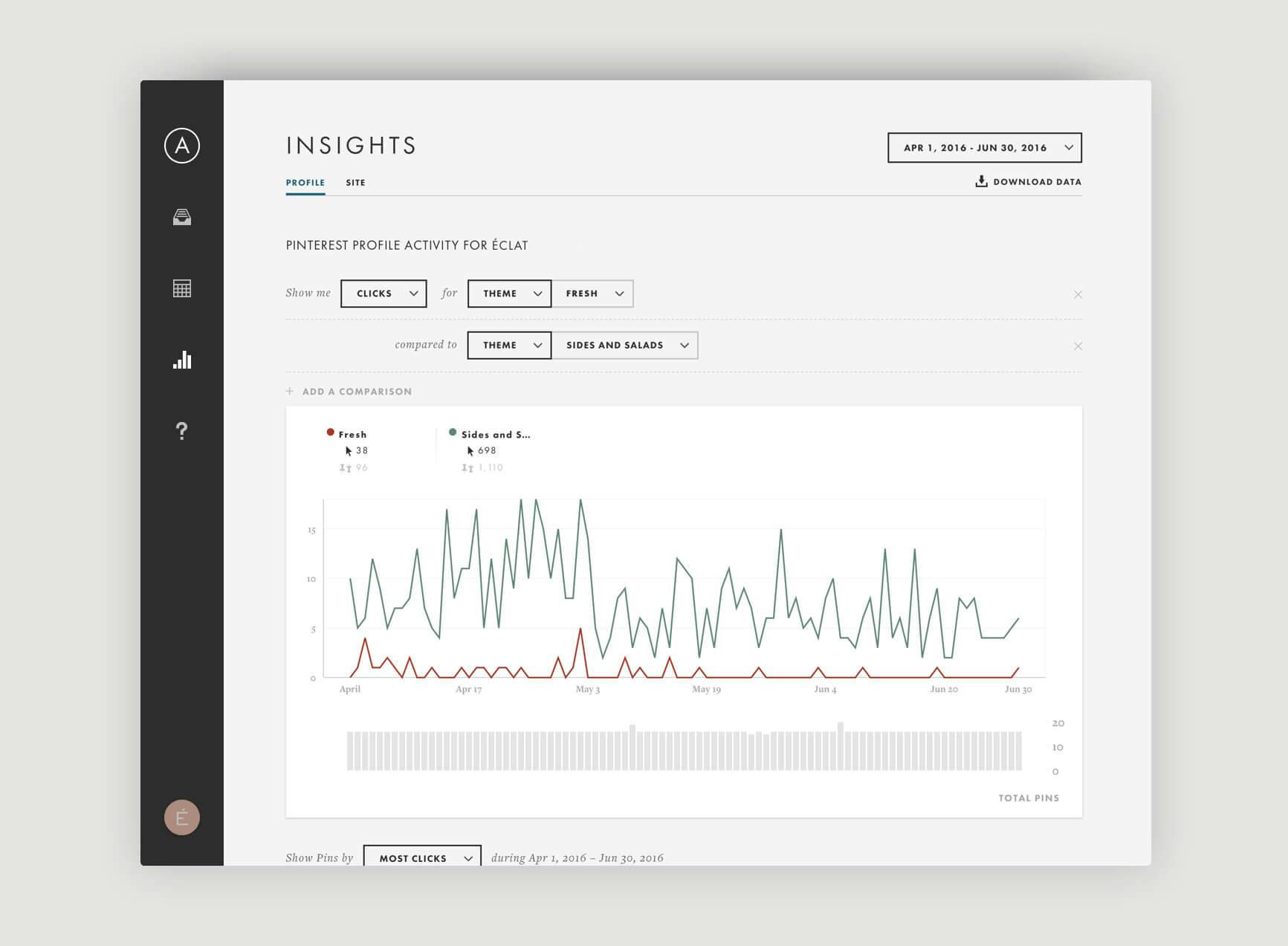
Identity
Creating a new brand identity in a week
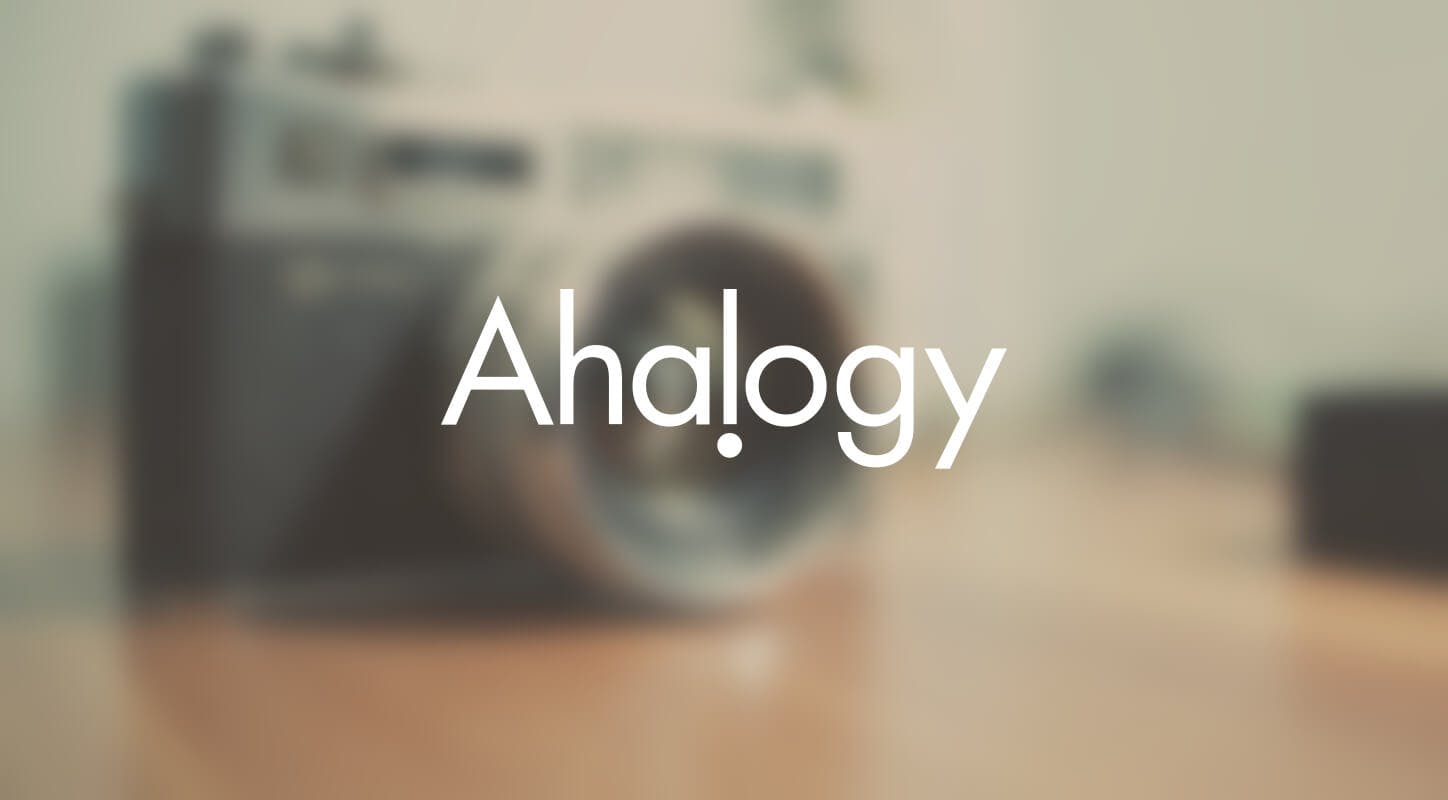
One week, we found out we had to change the name of the company. That week.
The company was originally called Pingage, but a certain company’s attorneys said that was no bueno.
At the same time, we were also realizing the company needed to expand it’s focus. What started as a simple way to help CPG brands on Pinterest became something bigger.
The new brand needed to take a higher altitude and align with the job of connecting brands to independent publishers for better content marketing.
It needed to represent a marriage between new technology and old-fashioned client service, and between the aesthetics of quality and the science of social discovery.
Oh, and we needed it by Friday.
There wasn’t time for a well-documented process. There weren’t rounds of revision and critique.
There were pages of poorly sketched concepts which have long since been lost. There were coffee-fueled journals about what client service and human relationships mean to a technology startup. There were ruminations about the meaning of Futura.
And then we had to ship something.
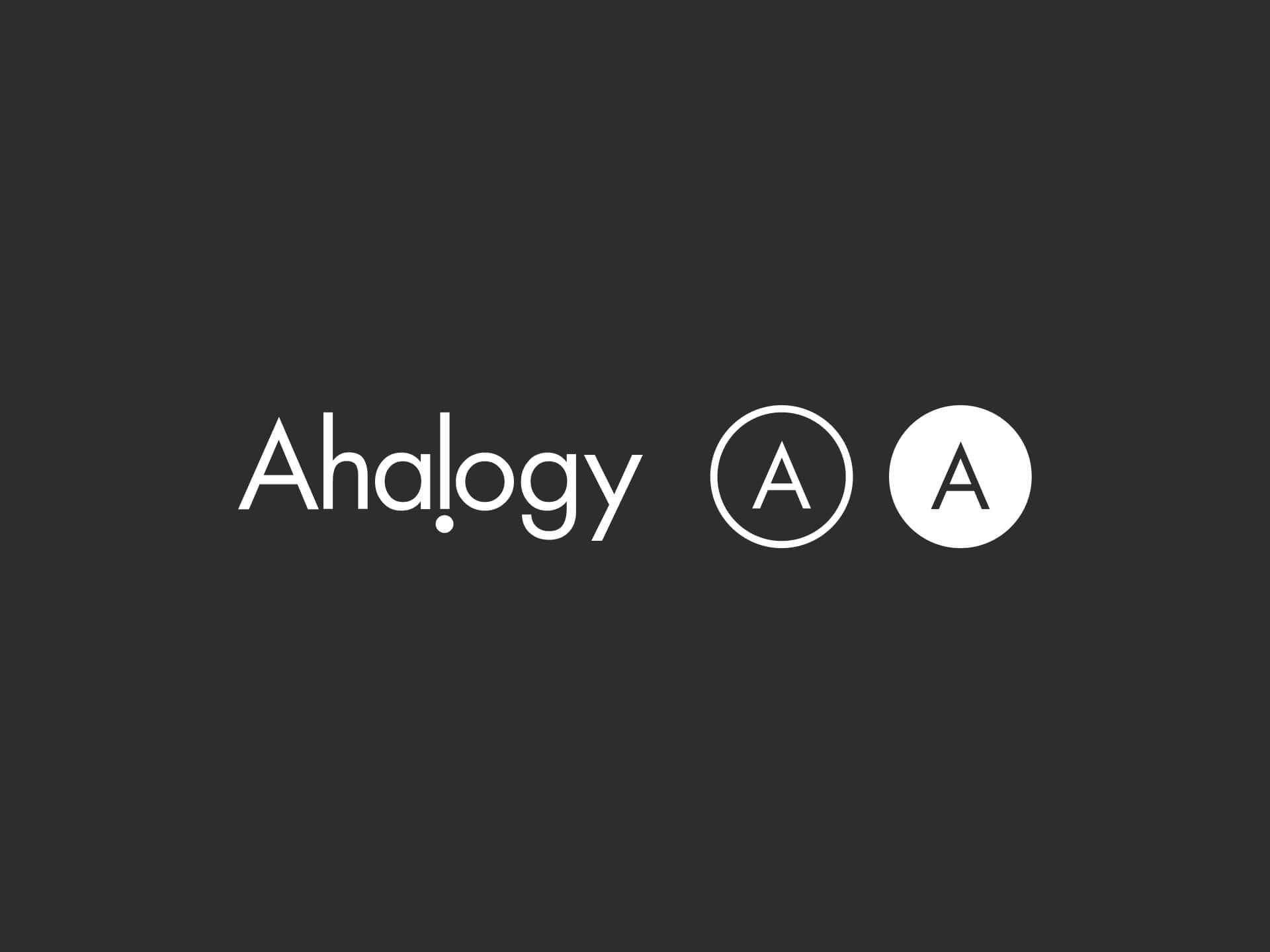
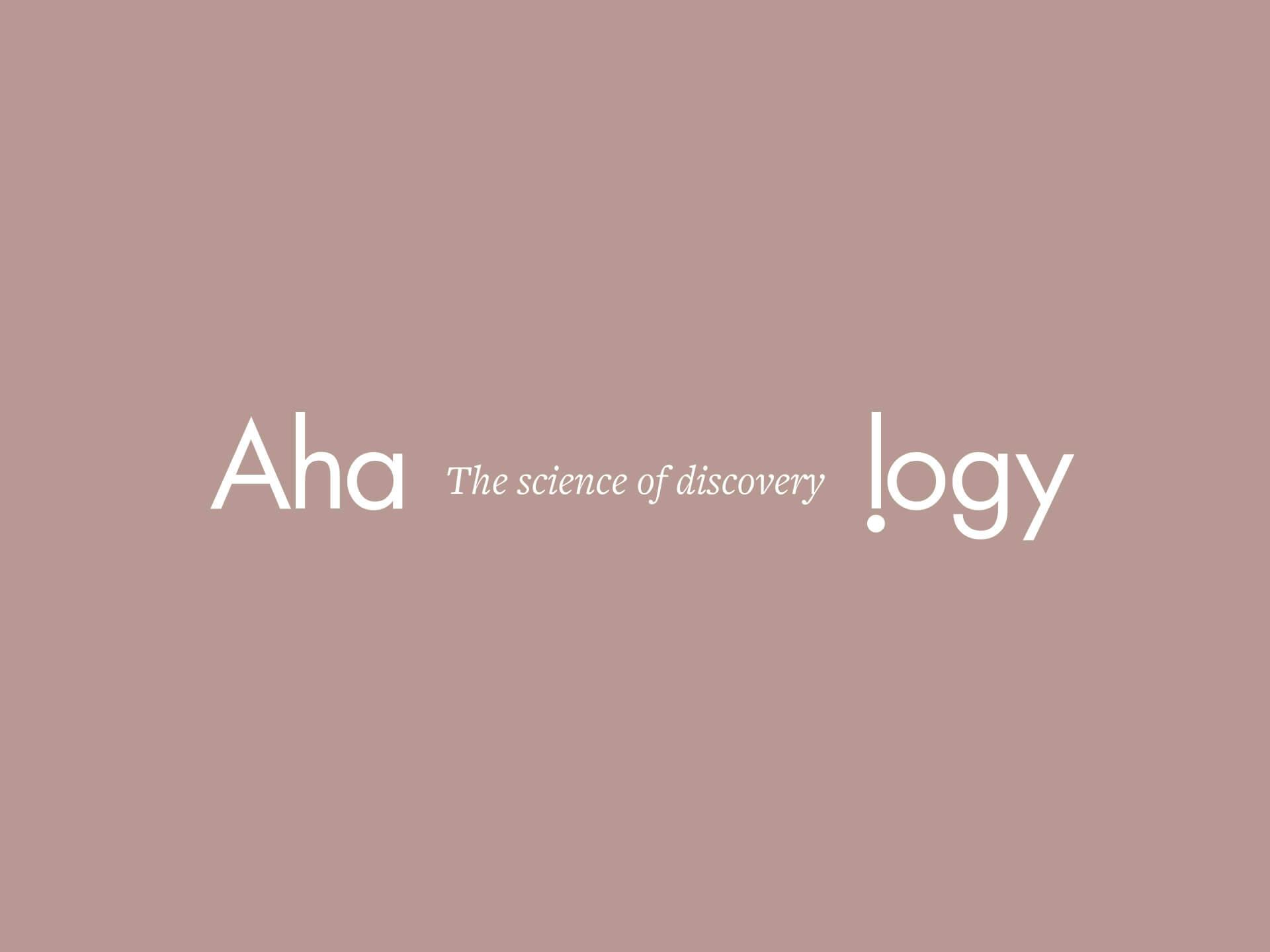
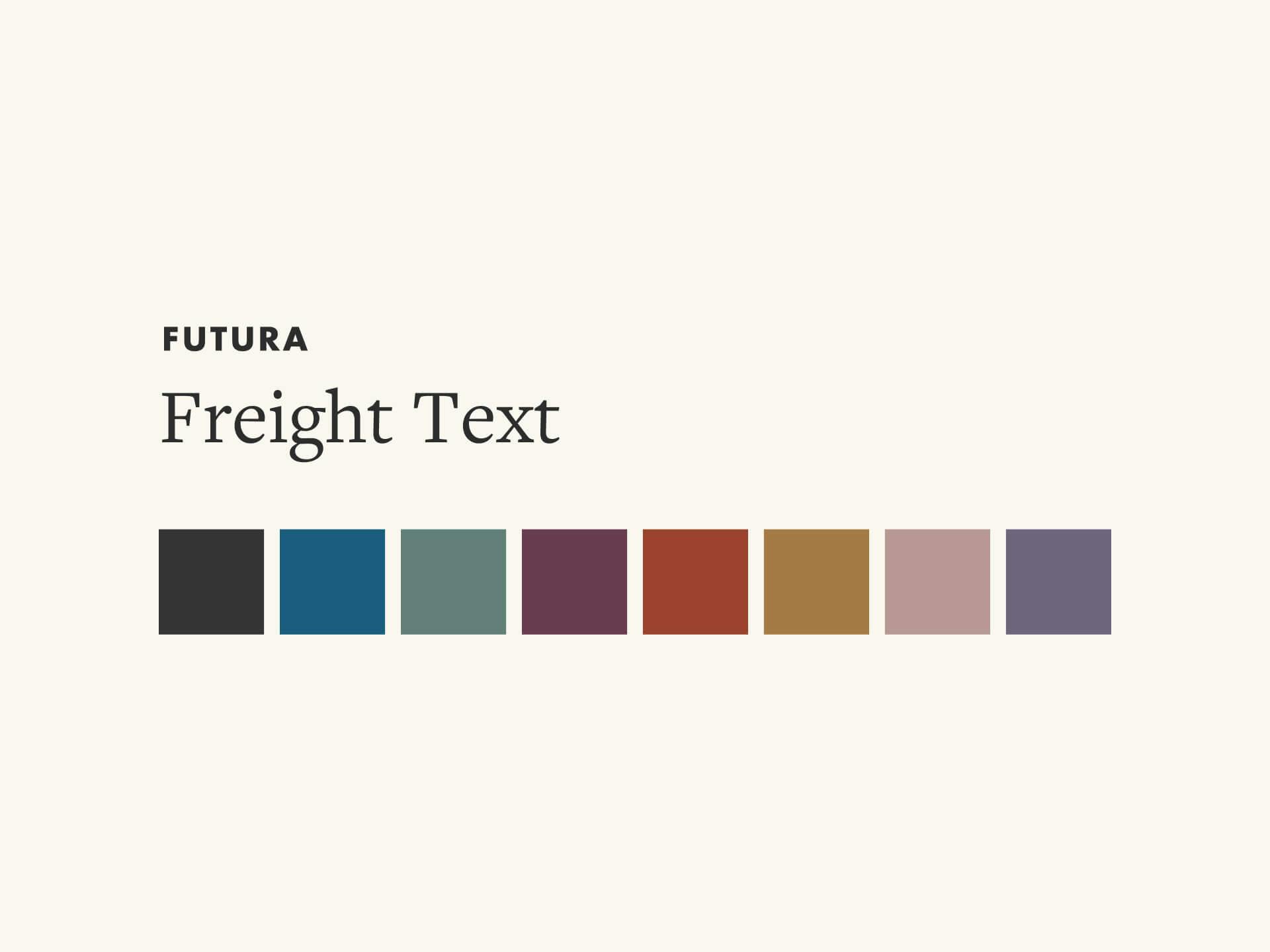
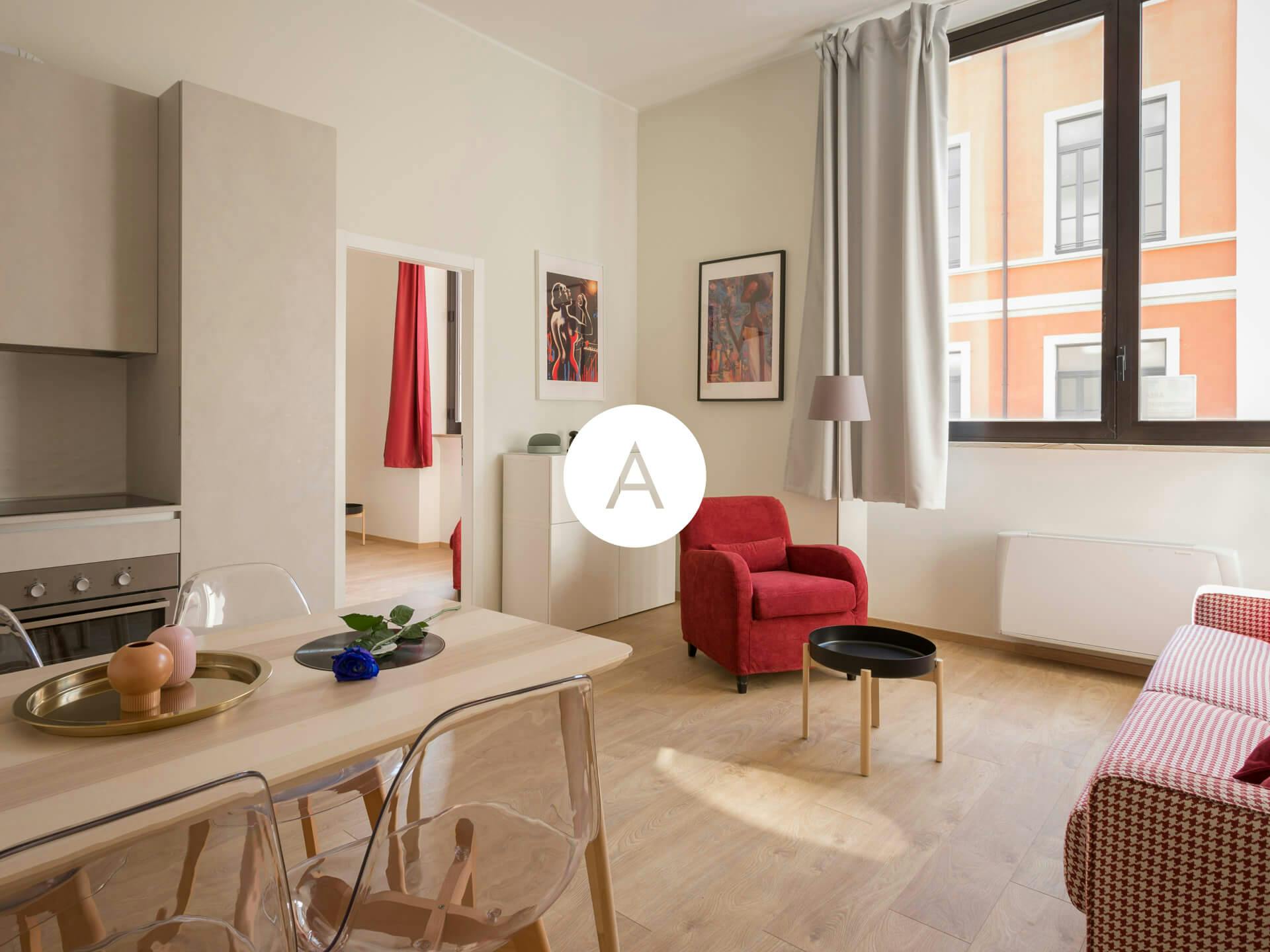
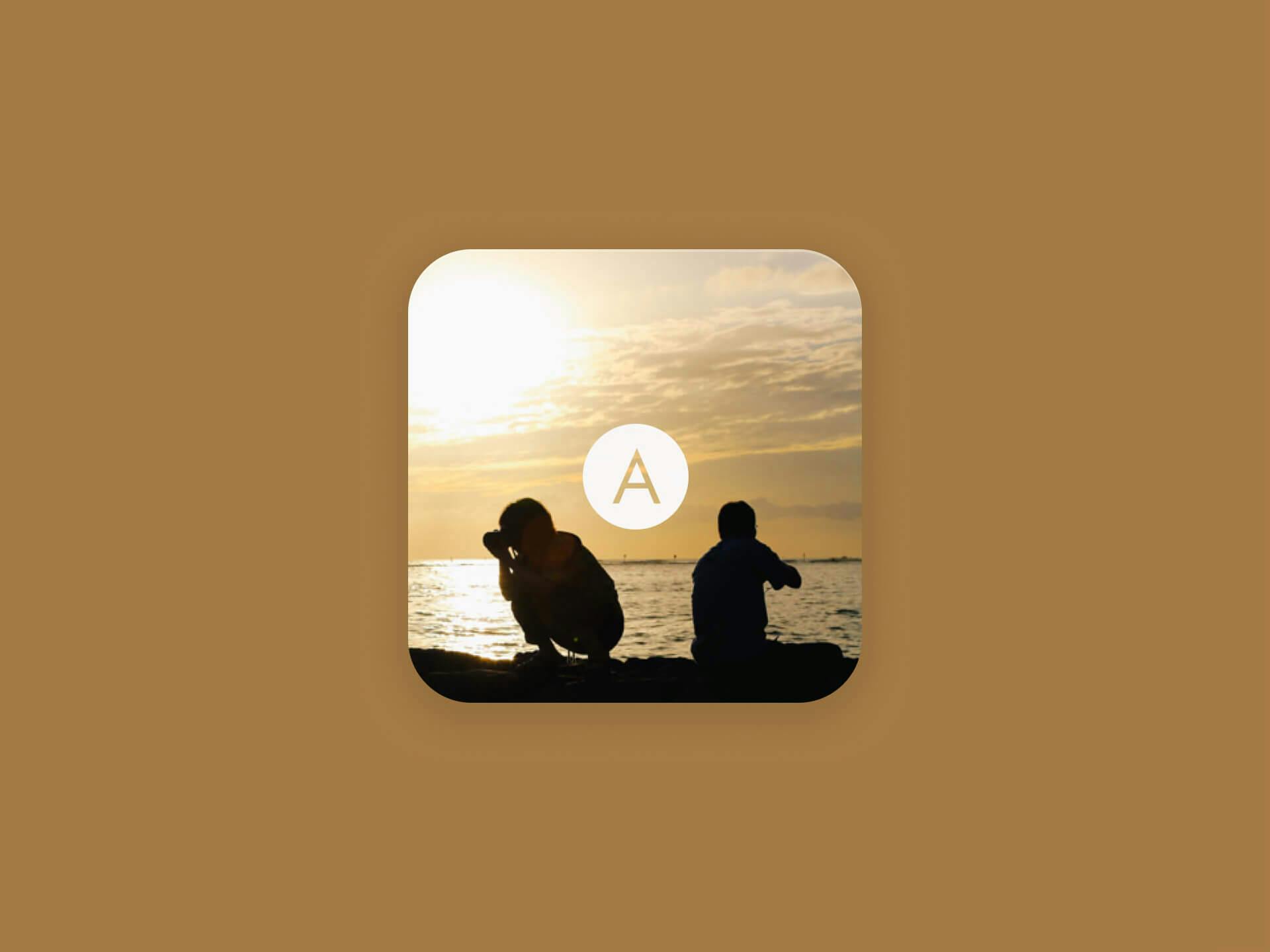
Mobile
A better on-site experience for creators in a snippet
Before there were Instant Articles, there was Ahalogy Mobile. For a while anyway.
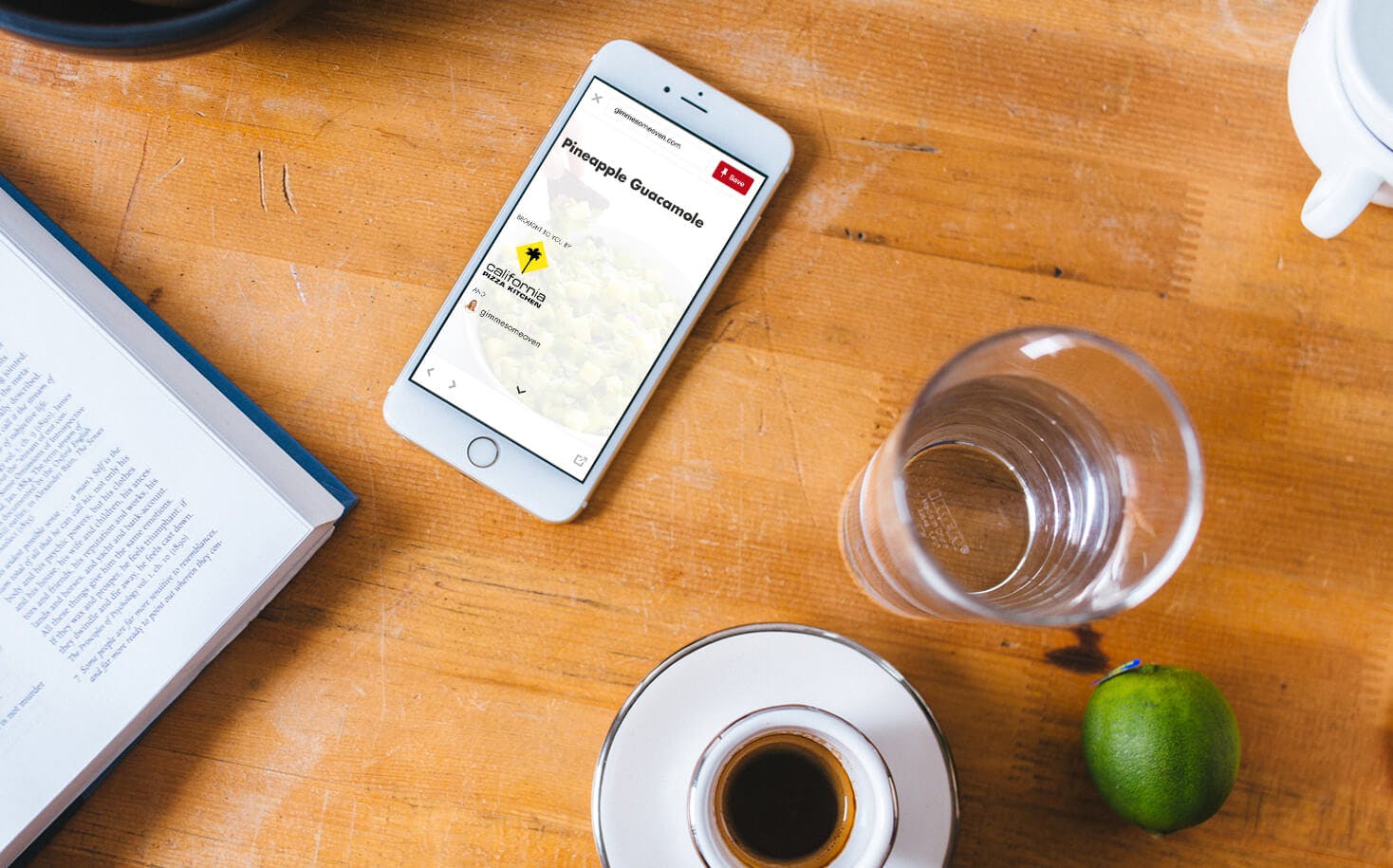
Ahalogy Mobile was a product designed and built for publishers to improve the reading experience of their sites when viewed within a mobile in-app browser.
I worked on the system architecture, designed it, and contributed to its development.
We started realizing our customers’ upside was being capped by the user experience of the pages to which the Pins linked.
Too often, tapping a Pin from Pinterest’s mobile app would fire up a UIWebView, inside of which you had the slow, ad-laden, painful privilege of viewing the recipe, fashion look, or article.
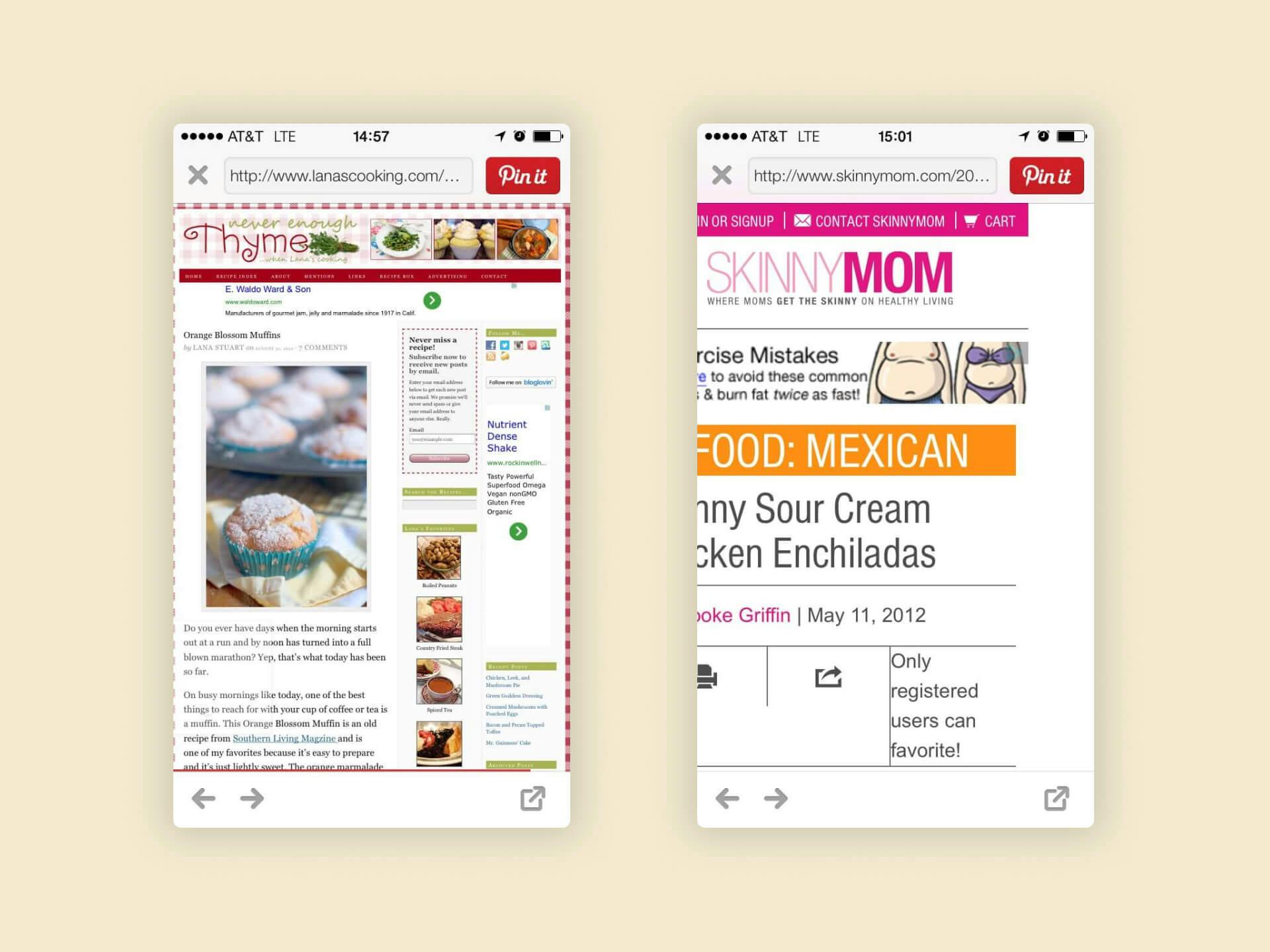
These smart but small publishers were struggling to adapt to socially discovered content. Their sites were often unresponsive, high latency, and poorly organized.
Read more about whyThe design
This was before Google AMP or anything like it. So we had to build it ourselves.
The design began, of course, with how it worked. We needed to control the presentation of contents across thousands of sites on multiple versions of Wordpress, only on certain devices and from specific referrers, all without changing the sites’ actual themes in any way.
The creators inserted our javascript snippet on their sites. It identified inbound traffic from Pinterest on a mobile device, would stop the DOM from loading, and would display the same content from our servers.
We stored parsed copies of all their old and newly created posts, and made those available from a CDN. That way we could load significantly faster, control the interface for reading, asynchronously insert the right ad at the right point in the article, and recommended the perfect article to read next from any of the publishers in our content network.
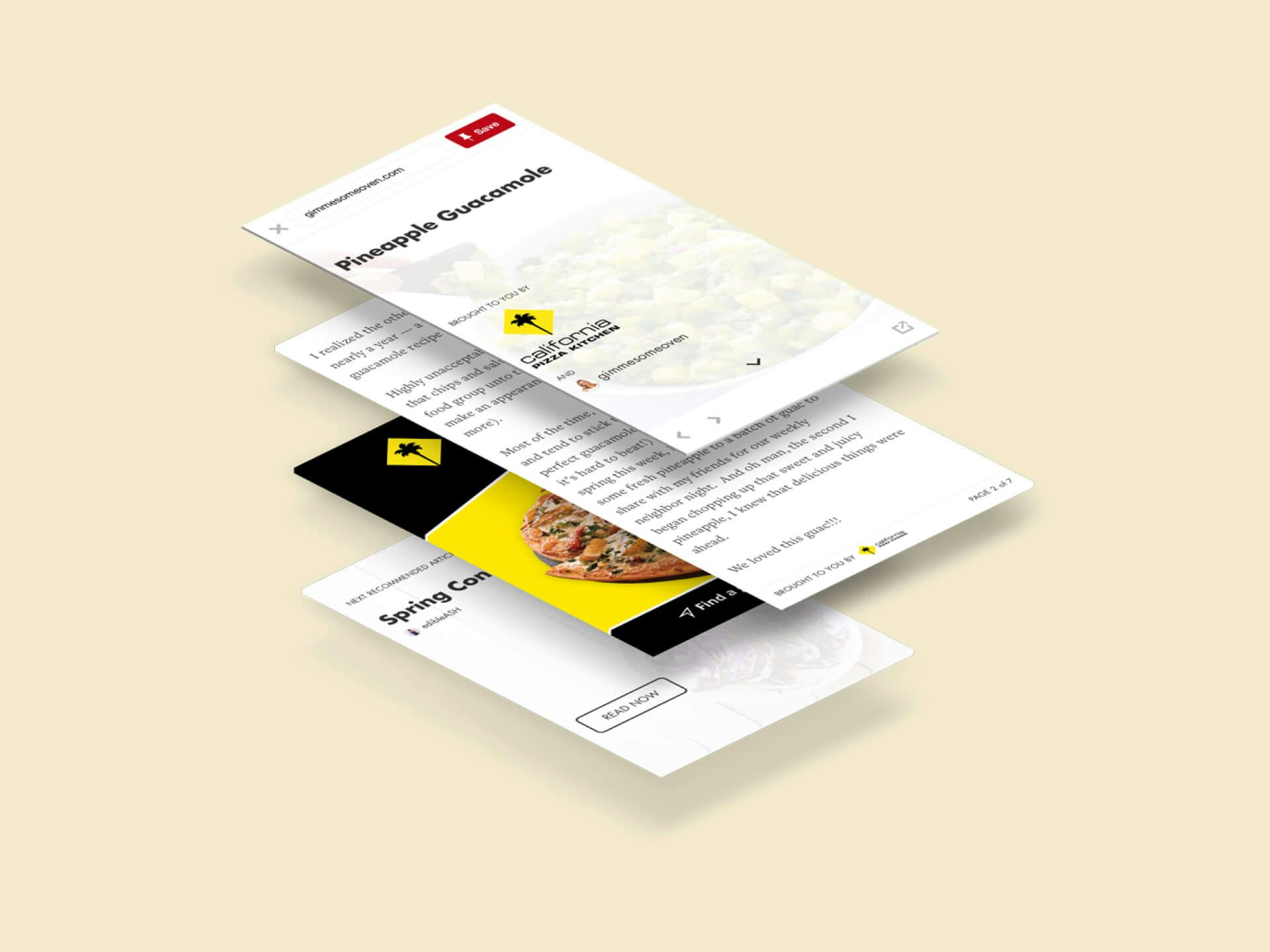
The interface design was based on a card stack structure. We used the semantics of the post to organize it into multiple cards which the reader could scroll and flip through (A few paragraphs, an image and its caption, a list of ingredients are examples of individual cards).
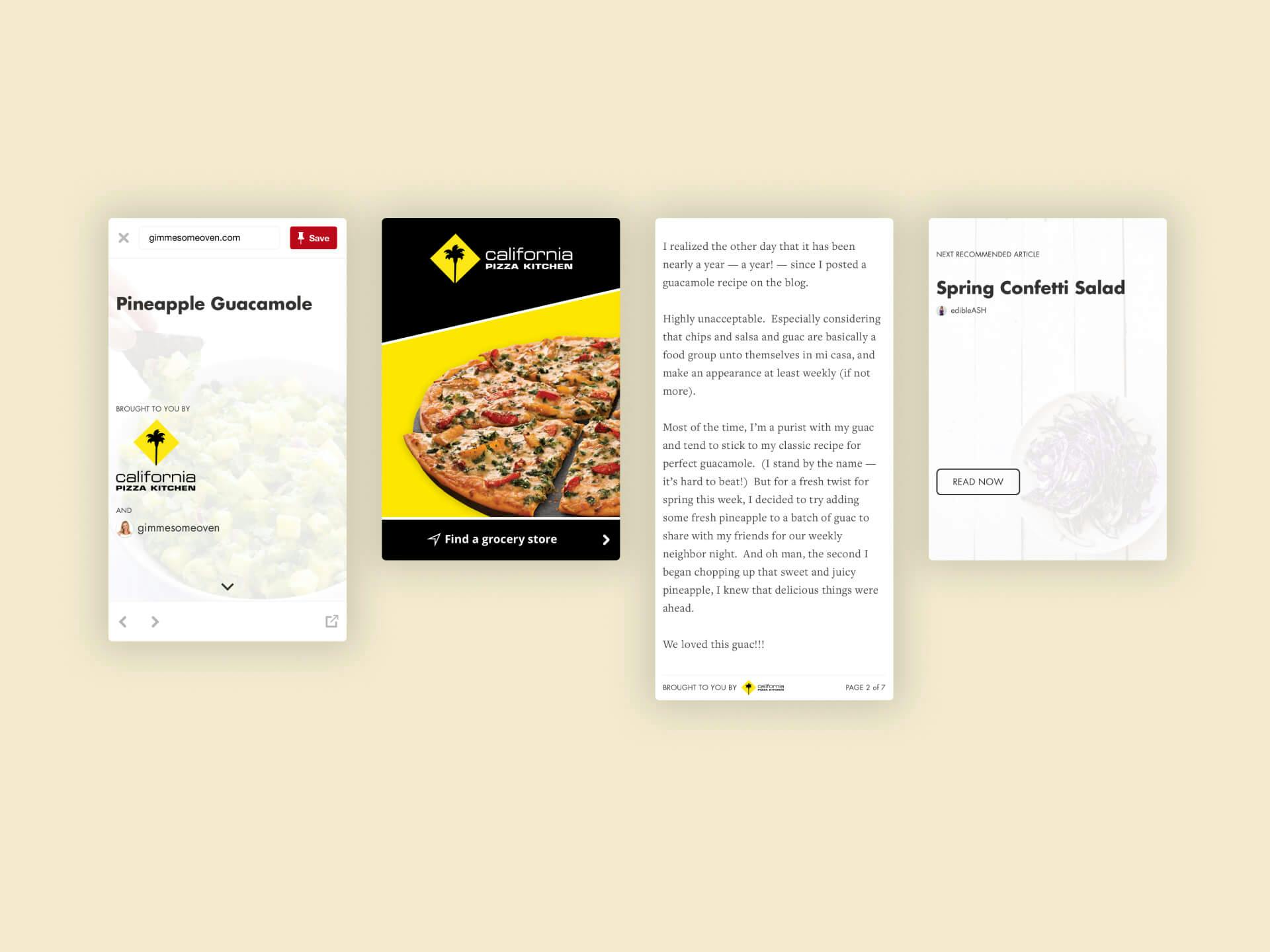
The result was a faster, cleaner user experience we could easily distribute to all of our partner sites.
The average time on site increased 30–100%.
And because the experience was so unique and the single sponsorship per post so engaging (without turning the experience sour), we were selling to top advertisers at a premium CPM. That gets us paid and enables the publishers to build their businesses. It was a win for all involved: readers, publishers, and advertisers.
The premature demise
The reason I haven't linked out to any live examples, dear reader, is that the product met its demise mere months after launch. Ahalogy had to pull it from the market because of what we'll call some strategic bullying by another company.
The end notwithstanding, Ahalogy Mobile showed me there’s still innovation left to be done in the rebundling of digital publishers. Google’s AMP tried. Facebook Instant Articles tried. Twitter has gone the other way, penalizing tweets in the algorithm when they link off site.
It might come at the operating system level, or the network level, or an arm-the-rebels approach like we tried. Just so long as someone does something.
Muse
Data-driven trends and inspiration for content marketing
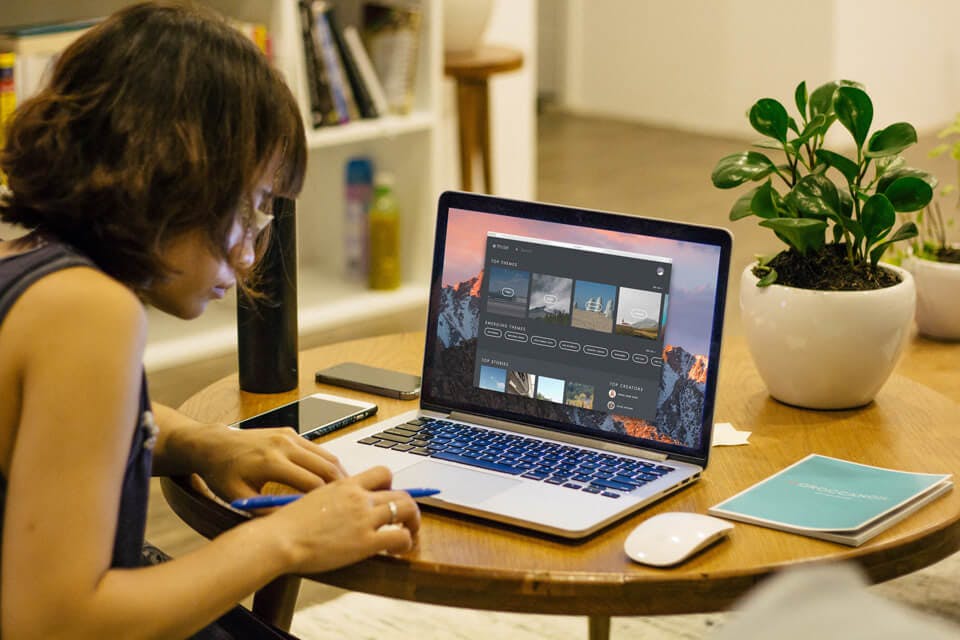
Muse was a new enterprise web app from Ahalogy to inspire better content marketing.
While working on our content marketing platform we continued to hear from brands that the job to be done Make it easier to create content that resonates with my audience was getting more important, but nothing had been created to satisfy it directly.
Creative agencies often can’t bring the rigor that comes uncovering trends from large datasets, and social listening products, on top of being atrocious to use, are too myopic to be helpful.
Rather than focus on what folks find interesting, these products are oriented around the brand itself: Who's mentioned my brand? What's the sentiment of posts mentioning a specific term? Etc. Etc.

Muse focused on that gap in the market: unearthing what themes and ideas are popular with a brand’s audience, showing real-world visual examples of that trend, and making it easy to turn this insight into action as great content marketing.
A brand could test a piece of content by posting it organically, or buying it and working with the creator to develop a piece of custom branded content with it. At Ahalogy we called these Brandables.
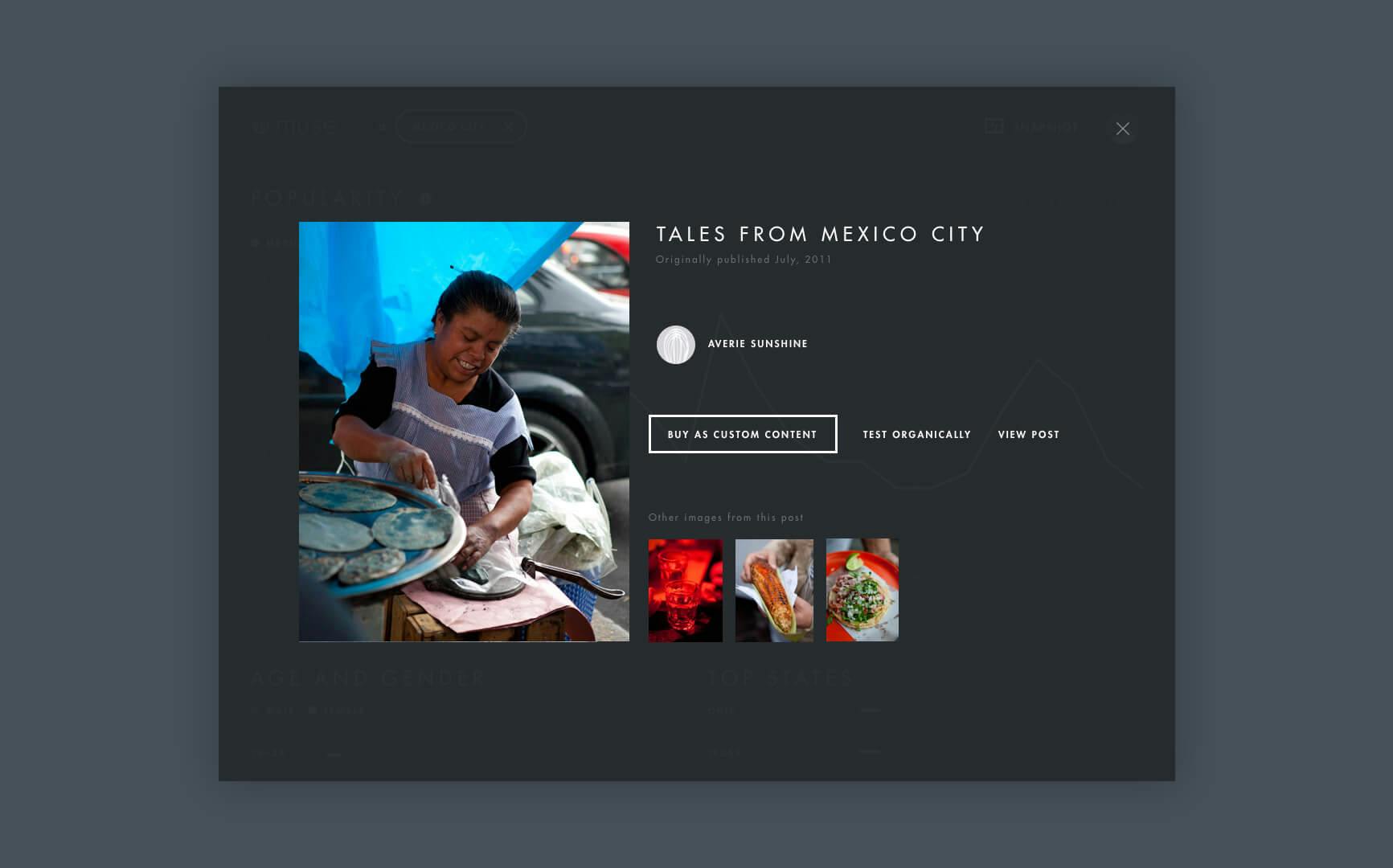
The app filtered through a firehose of Facebook content and interaction data, made sense of it, and surfaced themes trending with the brand’s audience.
You could research and compare trends over time, and export a snapshot designed to easily fit into the Microsoft Office workflow of Fortune 500 marketers.
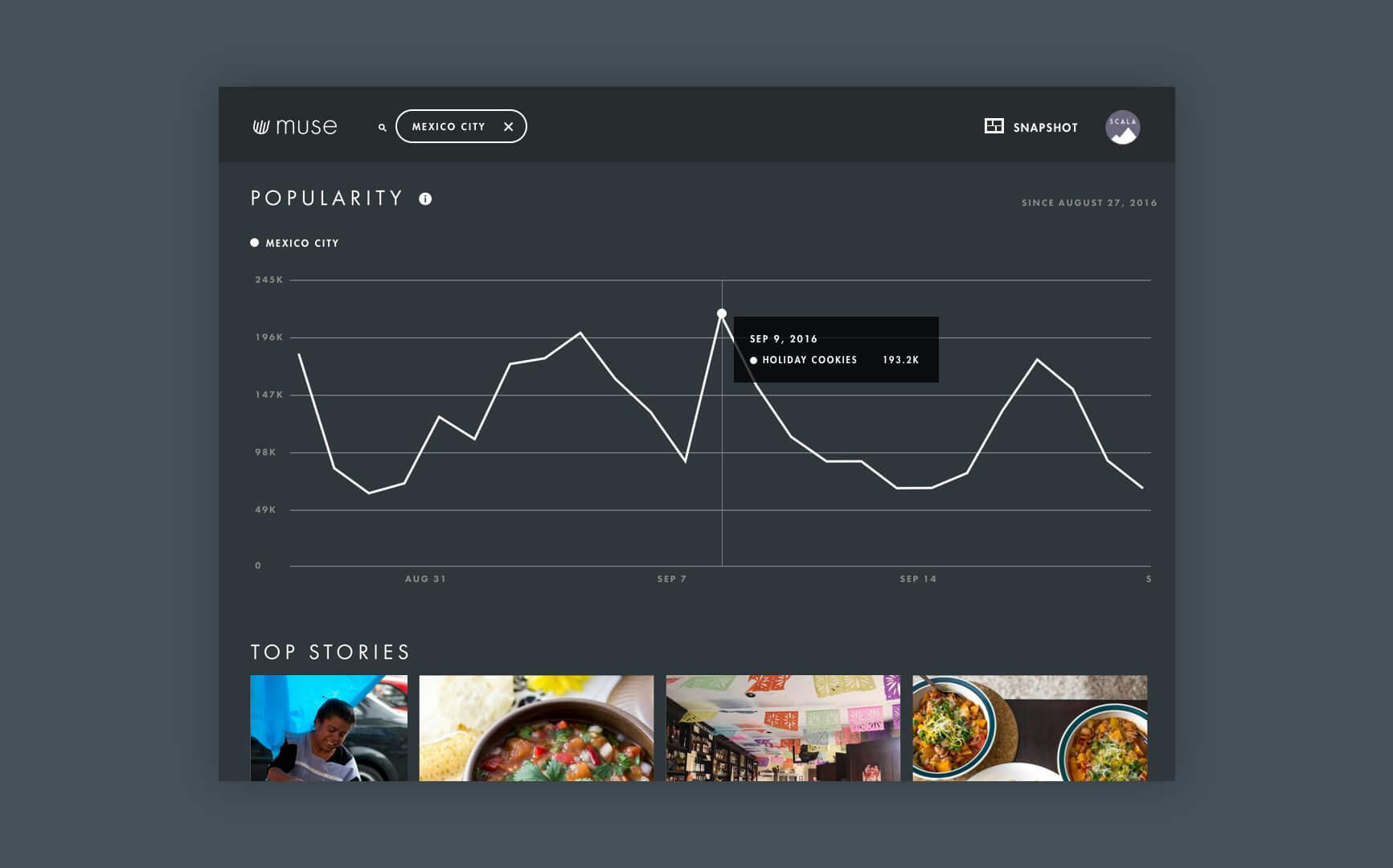
Results
Relying especially on Muse to help drive sales of shopper marketing campaigns, Ahalogy hit cash flow positive in Q1 2017 and was acquired by Quotient for ~$50M in June of 2018.
See the announcement